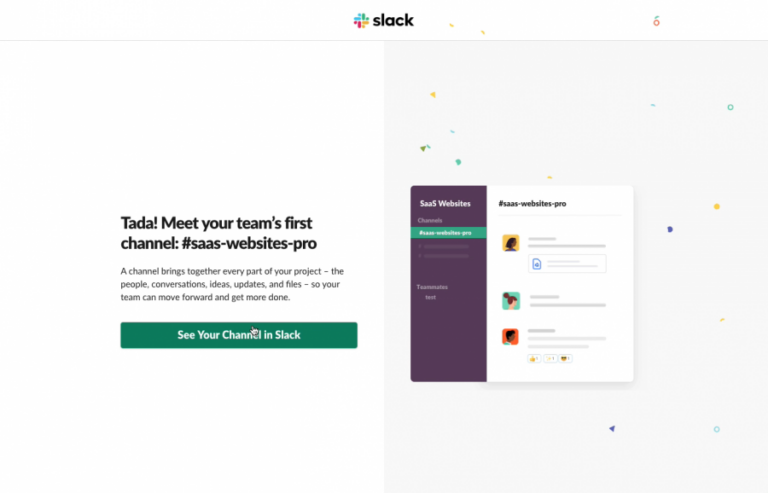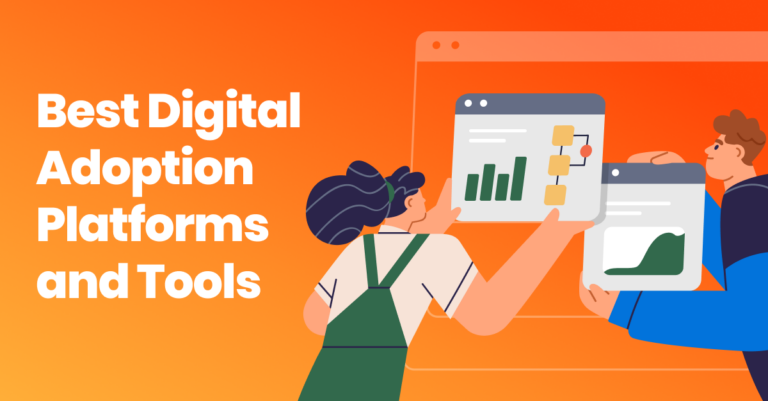If you were asked to describe the company Apple, chances are the synonyms “high-tech”, “luxury”, and “innovative” come to mind.
That’s the power of a brand. It evokes emotion and personality.
A strong brand can boost your product value and build a relationship with your user base. This power needs to be harnessed within the first interactions with your platform to create a lasting impact.
Understanding how to play to your brand’s strengths during the onboarding journey will build trust and loyalty with your users.
Why is it important to maintain a strong brand during user onboarding?
Users don’t form relationships with a platform’s features — they build relationships with a brand.
And considering 81% of consumers need to believe and trust in a brand before buying it — it’s crucial for a brand to build that trust during the user onboarding stage. The brand’s vision, tone, and personality need to be introduced into the user onboarding experience during the trial stage– while still emphasizing the platform’s functionalities.
The mix of a seamless onboarding experience, direct “aha” moments, and brand presence is the ingredient that boosts conversions from platform trialists to loyal users.

Experts tell all: Six practices to strengthen your brand during onboarding
We’ve listened to, and chosen the best practices product managers use to maintain a strong brand throughout the user onboarding experience.
1. Create a seamless transition from sales to onboarding material
Incorporate the same brand strategy used during sales into the onboarding journey. The alignment will create trust with users and create a seamless experience.
Vaibhav Kakkar, CEO of DigitalWebSolutions, suggests introducing a seamless transition from marketing materials to the product interface by “including the same fonts, colors, and imagery in both contexts. It also means providing clear and consistent messaging about the product’s value and benefits throughout the onboarding process”.
The benefits of consistency have proven results. A consistent brand presence across all platforms increases revenue by up to 20%, according to a study by LucidPress.
To achieve consistency, create brand guidelines for each department. Make sure they are easily accessible and in a centralized location. Each team must be able to access brand materials easily. This will help avoid teams creating their own guidelines.
2. Keep your product message and design elements consistent
Consistent colors, messaging, and brand materials help users quickly find the value in your app. In fact, brand colors play a huge role in user recall and engagement. As 81% of consumers are more likely to remember the color of a brand, over its name ( Yikes!).
Introduce your brand materials throughout the onboarding process. Tarun Agarwal, VP of Growth, at Mailmodo, shares his experience: “At Mailmodo we feature our logo on various onboarding materials, such as welcome emails, and the onboarding screens. Additionally, use our brand’s signature colors consistently throughout onboarding screens and emails to create a cohesive and recognizable visual identity.”
Besides keeping the same design elements, make sure your messaging around platfrom features is the same. For example, if you sell a food delivery platform as having the most interactive navigation feature, be sure to highlight and prove this point during onboarding.
A strong and consistent brand presence through the sales, marketing, and onboarding process improves trust with users, and is a vital ingredient for customer satisfaction, according to a study by McKinsey.
To keep design elements consistent, Draven McConville, CEO and Founder of Klipboard, suggests “use a standardized template for onboarding materials. This technique unifies the visual and contextual features of these materials, and ensures a consistent and unified presentation in accordance with the company’s branding rules.”
And, as your company grows, Max Maybury, Co-Founder of AI-product reviews, suggests “make sure that our branding continues to evolve without losing sight of who we are as a brand. It’s a delicate balance between personalization and consistency”.
3. Align your whole team
A brand does not live only in the colors and logos of a platform. If it did, it would be superficial and fragile, without evoking any form of personality.
Instead, a brand lives in the shared vision, values, and strategy of its team. It grows and develops as the team and business expands.
From feature releases to product-centric approaches, to the vision of the brand, all these micro-decisions impact the strength of the brand and how it presents itself in onboarding.
It’s important to have your whole team, from product managers, and marketers to developers in alignment with how to move the company forward and strengthen the brand. Abhishek Shah, Founder of Testlify, gives some helpful advice to achieve unison “Our onboarding process includes brand-centric training modules. This ensures that employees understand and can effectively communicate our brand’s unique selling points and values”.
Through team alignment and training, the onboarding process can be strengthened. Abhishek Shah adds “We make sure that the onboarding process seamlessly aligns with the features and benefits of our product. This alignment helps users understand how our product fits into their needs and reinforces our brand message”.
4. Consistency across segmentation is important
Part of successful user onboarding is the ability to create a personalized onboarding journey that matches the goals and needs of a user. For that, you need segmentation.
Segmentation in user onboarding requires different onboarding flows, features, and content to match each user’s needs. Due to the different flows possible, it’s important to keep the brand present.
Abhishek Shah explains, “Different user segments may require slight variations in the onboarding process. Balancing customization with maintaining brand consistency can be tricky” To help tackle the nature of dynamic onboarding flows, it’s important to keep an “Evolving Brand Identity”. Abhishek Shah explains, “As our brand (Testlify) evolves, we need to ensure that the onboarding process keeps up with these changes. This requires constant monitoring and updates.
To achieve an evolving brand identity, it’s important to continuously include brand guidelines for new onboarding materials and features, but also to listen to user feedback and adapt to their needs.
For example, if users of a segment require more support on analytical features, offer them the help through webinars, hints, or demos that push forward your brand identity, and improve the onboarding experience.
5. Play around with interactive media
Visual elements in the onboarding process help educate users with images, videos, and screenshots. This allows users to grasp concepts quickly.
However, that requires media that follows your brand’s tone and accomplishes delivering the onboarding message correctly.
James Smith, from Travel-Lingual recommends creating onboarding materials based on user feedback. They accomplish this by “We’ve added some interactive elements to make it more interactive and show off our fun language-learning tools. User feedback has helped us determine what works for our audience and ensure we have the right onboarding materials.”
User feedback helps the team create a helpful and brand-aligned onboarding process. Which is achieved by “We ensure everything looks and feels the same, from the app interface to the tutorial videos. It’s all about creating an interactive and visual story that strengthens the brand from start to finish. Consistency builds trust, and trust builds character.”
6. Close the gap between product and marketing
There is an invisible wall product managers confront when creating their user onboarding flows: How to highlight the platform’s functionality while still maintaining a strong brand tone.
The pull and tug of the product team and marketing team can sometimes create a fuzzy environment for users to fully immerse themselves in a brand when onboarding.
This challenge usually arises when there is a disconnect between marketing and the product team.
Vaibhav Kakkar, CEO of Digital Web Solutions suggests “Ensuring close collaboration between these teams is essential to overcome this challenge and deliver a cohesive and branded onboarding experience.”
Keep product and marketing teams in the loop on user feedback and design decisions. This allows teams to have a unified front towards product feature improvement and communication.
Support your brand growth and user growth with the right tools
To introduce users to your brand in onboarding and leave a lasting impact, you need an onboarding solution that gets the job done.
That’s where Product Fruits steps in.
You need users to understand your platform and be immersed in a brand experience. That’s the secret to user conversion and business growth. To accomplish that, you need an onboarding platform that offers a full range of features and tools to make your onboarding a seamless (and converting) journey for users.
Product Fruits act as an invisible layer on top of your platform. That means you can create a user journey without any coding. Simply click and add features to help users immediately find the value in your app.
Each feature is fully customizable, so your brand can live in every interaction. From hints, to tours, to checklists, to surveys, interact with users your way.
Try Product Fruits for 12 days, free. Or book a call with our user onboarding specialists to get the best practices and tools to reach your onboarding goals.







